So you’ve had type 2 diabetes a while but you still can’t determine the diabetic diet basics and what’s best to eat to lower blood sugar and A1c. Or perhaps you’re newly diagnosed and completely confused on where to get started.
The most important thing to recognize is that if you want to lower blood sugar levels, your eating plan plays a crucial role.
With the right choices of foods, you can regulate your blood glucose levels, keeping them within a healthy range – which means a happier you overall!
If you want to get started right away, grab a copy of our recommended food list (free) so you can get a good overview of what to eat.
Okay, let’s delve in and explore some basics to help make this whole diabetic diet ordeal a little clearer.
First, let’s go over a few different diet concepts you may have heard of. Then, we’ll cover how you can start making healthier food choices and control blood sugar levels easier.
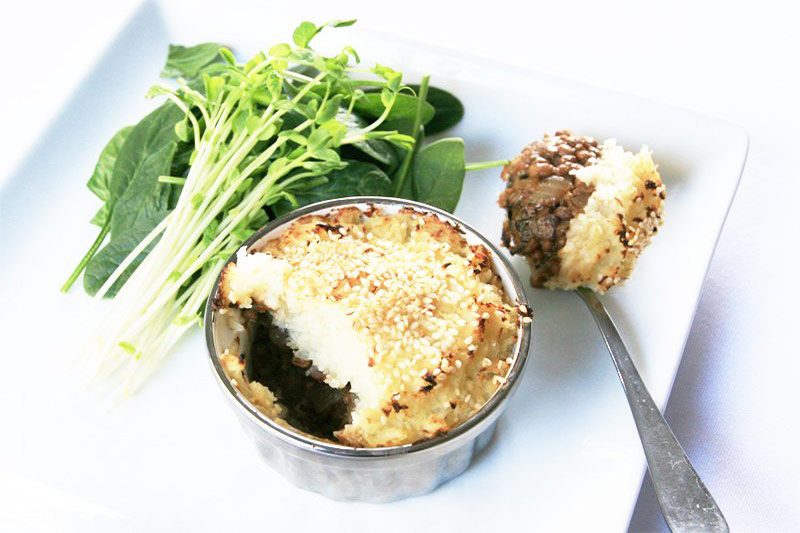
Food Groups
In a traditional sense of the word, the choice of healthy foods has always been positioned as the “5 food groups,” right? No doubt you’ve heard that before.
These groups are:
- Vegetables (and beans and legumes)
- Fruits
- Grains/ cereal foods
- Lean meats
- Dairy products
And, perhaps you’ve heard or read that with diabetes you can choose from the 5 food groups as long as you eat everything in moderation.
While it is true that choosing from those groups is a great idea, IF you stick to whole food sources. There is a bit more to the story.
You see, there are really only 3 true food groups (not 5!), and these are what’s known as the macronutrients:
- Carbohydrates
- Proteins
- Fats
That’s it – just 3.
So where you can instantly get in trouble with the 5 food groups is eating way too many carbs. And if you didn’t know already, carbs are the macronutrient that has the greatest impact on blood sugar and A1c.
Let’s look at the 5 food groups again, this time putting them into one of the 3 true food categories:
- Vegetables (and beans and legumes) – Carbs
- Fruits – Carbs
- Grains/ cereal foods – Carbs
- Lean meats – Proteins and fats
- Dairy products – Proteins and fats
Sure, you may have heard that fruits are “healthy” and brown rice or whole grain bread are a “healthy” option. And while it’s true, whole grains and fruits are certainly healthier options to their “white” counterparts. And for the general population they could make up part of a healthy diet.
BUT, with diabetes and prediabetes, it’s a different story.
You see, prevention of a condition and treatment of a condition are two very different things. When you have diabetes and prediabetes, these foods are not a good friend and are best kept out of your diet plan.
Quite simply because these foods are high in carbs and will make it more difficult for you to manage blood sugar effectively.
Don’t take my word for it: Even the American Diabetes Association Medical Treatment Guidelines Report, states: “whole-grain consumption is not associated with improvements in glycemic control in type 2 diabetes” – or in other words, they won’t help you lower blood sugar and A1c levels.
Here at DMP, we evaluate the research and give it to you straight, sharing what the evidence suggests works best. And unfortunately the food group “grains/ cereals” are nowhere in the picture. And while some fruits are okay to eat, most are again, way too high in carbs (fruit juice included).
In fact, by following the 5 food group outline, you could easily be racking up a lot of carbs and struggle to maintain a healthy blood sugar range.
So, let’s explore some other options.
Plate Method
The plate method is a simple way to divide your plate that uses the visual cue of the plate to measure approximate portion sizes for various food groups.
Take a look at the following image to give you an idea how it works.
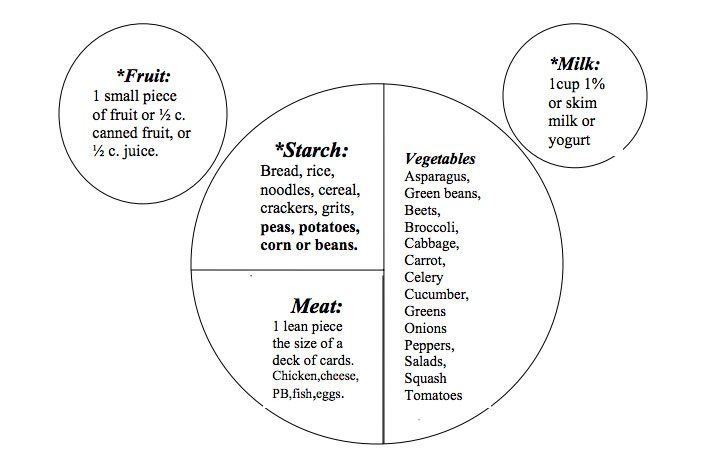
While the plate method may work for some, there is one major issue here. Again this method assumes that everything is okay in moderation. And therefore, the meal plan includes starches like bread, rice, noodles, cereals, potatoes, corn and so forth – all the very high carb foods that are not blood sugar friendly.
And as we already established above, according to research, these foods do not help with blood sugar control. So why include them in your plan?
Carbohydrate Counting
Carb counting is really the most accurate way to know exactly what you’re consuming, at least in terms of carbohydrate intake.
While we won’t go into detail here, you can find a carb counting tutorial here, plus detailed info about net carbs vs total carbs here.
Please pin, tweet or share; then keep on reading.
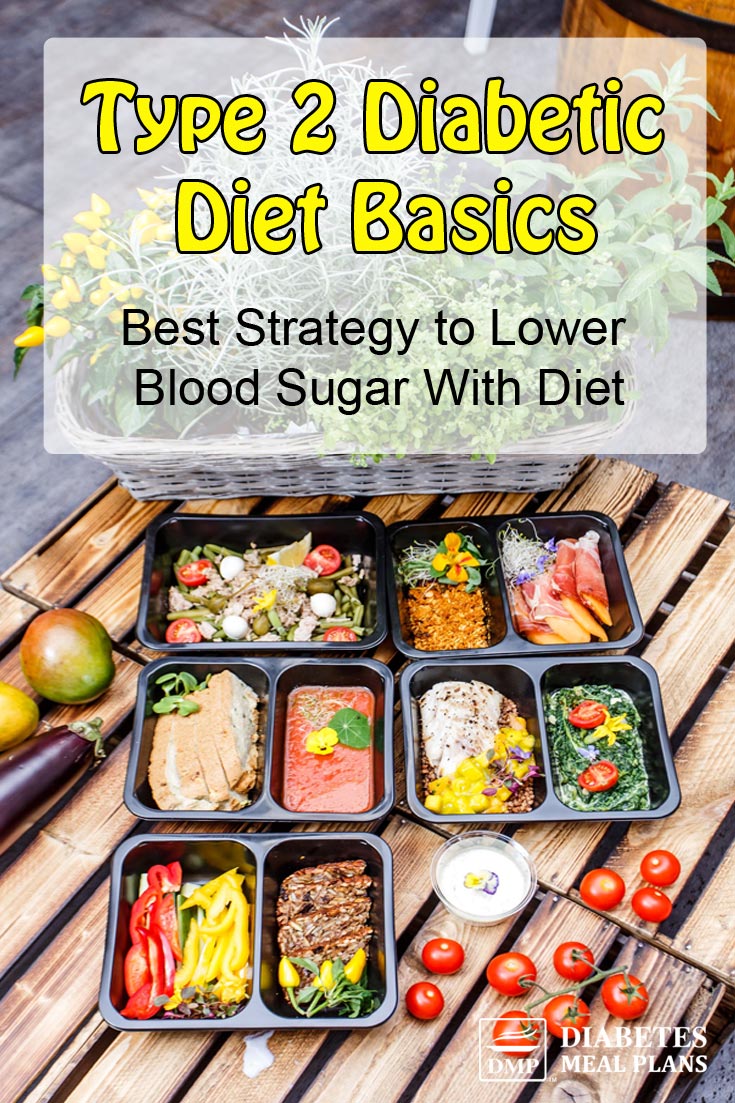
The Easy Way To Manage Blood Sugar
If all this is still confusing and you’re looking to get started without getting caught up in this whole mess, then here’s exactly what to do.
1. Eat REAL FOOD!
Cut out as much processed and packaged food as you possibly can and head to the fresh food section of the grocery store.
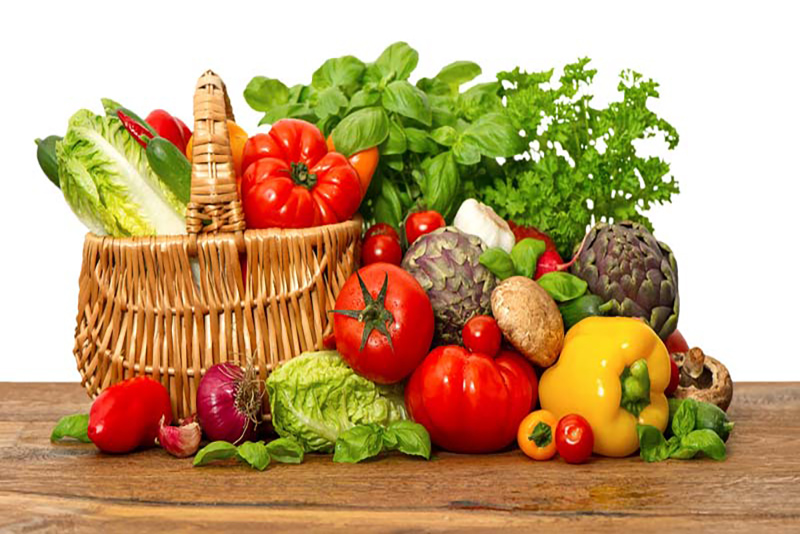
While we do encourage a lower carb diet, which doesn’t generally include grains, the addition of brown rice or whole grains in a diet where you’re eating whole foods, is still going to be a lot better for your body than sugar-laden, artificial sweeteners, food additives, loooog list of ingredients on the food label, man-produced garbage and junk!!
As Dr. Barry Groves once said:
“Man is the only animal smart enough to make their own food; and the only ones dumb enough to eat it!”
2. Cut the big carb offenders
Work on eliminating, or at least cutting down on, the big carb offenders. These are the foods loaded with carbs that quickly send blood sugar UP and make it difficult to get A1c down, which overall means difficulty in gaining good blood sugar control.
What are these offenders you ask?
- Potatoes (including sweet potatoes) – both are starchy vegetables full of carbs!
- Pasta
- Rice
- Noodles
- Cereals
- Bread
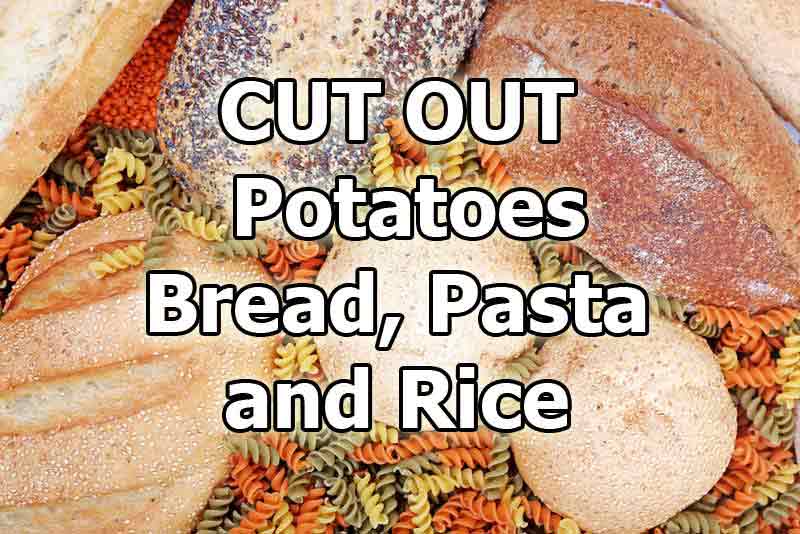
3. Use our food list
If you haven’t seen our recommended food list – view it here now; or better yet, grab your free copy and get started today.
Refer to the food list regularly, choosing majority of your foods that are included on the list of ‘YES’ foods.
These foods are the type of foods that make up a healthy diabetes-friendly diet.
4. Keep learning, keep applying
You don’t have to know everything or be perfect. Just start somewhere and make one or two changes, then keep going forward from there.
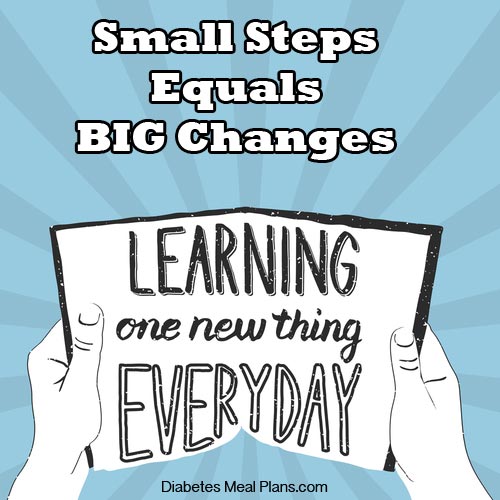
For instance, a good place to start is your breakfast eating habits.
Ditch the cereals and eat an egg-based meal. You can boil eggs, fry eggs, scramble eggs, poach eggs, make them into egg muffins, frittatas, slices and so forth.
Then once you get some ideas for breakfast, work on lunch or snacks, and so forth.
Just keep on learning. It takes consistent effort to be well and stay well. And that’s the same for all of us, diabetic or not!
5. Completely confused by all this diet stuff? Take our clinically proven T2Diet Program
Our clinically proven T2Diet Program is designed to make all this nutrition and diet stuff a lot easier!
Over 16 weeks, the online program guides you step-by-step on exactly what to eat to lower A1c, weight, BMI and medications. All it takes is to watch the weekly videos; browse the food lists, guides and resources; and take the action steps.
In just a short time, you’ll see your health improve dramatically, and most importantly, you’ll know exactly how to manage your diabetes long term, naturally with nutrition.
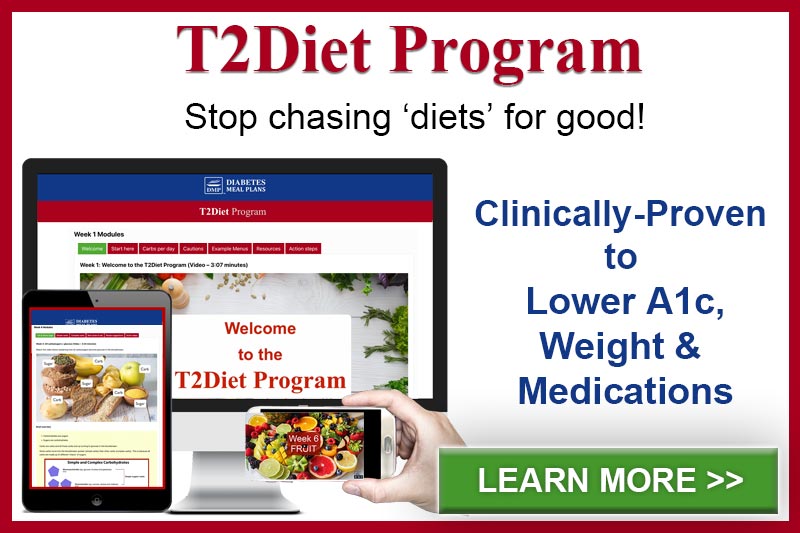

Sarah B.
Do you have any recommendations for diet for someone with type 2 diabetes (never been on insulin, just regulating through diet/exercise) who is currently pregnant?
Dr Jedha
Hi Sarah, we specialize in prediabetes and type 2 but most of the information will be relevant to you, so follow the recommendations in the article is probably a good start.
Lori
How much does this cost to join the meal plan?
Jedha: Nutritionist (MNutr)
Hi Lori, you can view the meal plan options here.
Karen Coudray
I am very picky! No fish of any kind, no nuts of any kind. All veggies not hardly cooked, but really cooked! No spices but small amout pepper, salt, garlic. Nothing spicy or hot!
Emily - Dietitian (MS, RD)
I always encourage people to be willing to try new foods :) But, in general, as long as you’re still able to consume a variety of foods and you’re picking low carb choices then you can manage your blood sugar pretty effectively. We have plenty of non-fish recipes in our meal plans, and you can always adjust seasoning to your liking – we do include lots of veggies in our recipes!
Roberta Lynn Barnhart
I’m diabetic, but I also have celiac disease as well as several food allergies. I’m allergic to melons (all kinds), almonds, peanuts (maybe?), avocado (maybe?), eggplant, oats (even if it’s “gluten free”), and onions. The maybe ones are ones that I don’t have a consistent reaction to, but I’ve reacted to them enough times to be wary. How would you set up a meal plan for me?
Jedha: Nutritionist (MNutr)
Hi Roberta, With our weekly meal plan service there is always plenty of variety so catering for your needs is easy. You can easily omit onions from recipes, we never use oats and all our meals are gluten free, and if you were to join us as a VIP Member, you can use our advanced filtering to exclude meals with nuts and peanuts so you can swap and change meals. And with access to over 900 meals, there are plenty without avocado and eggplant etc.
Ang
What if I dont like Amy of these foods? I enjoy veggies, but I can’t have seafood and dont care for eggs or most healthy foods what then?
Emily - Dietitian (MS, RD)
I would try to include as many of the healthy foods that you do like, and be open to trying new ones that you may develop a taste for over time. A healthy diet can be as simple as leftovers for breakfast, a chicken salad at lunch, a piece of meat and side of broccoli at supper and snacking on nuts and cheese in between meals.
If you find your blood sugar is constantly high because you are only eating high carb foods/ unhealthy foods, then at the very least you need to speak with your doctor about starting new/ additional medication to hopefully lower your numbers a bit. Ideally you would do this in conjunction with a healthy diet but you need to find something that works for you and your lifestyle. If you continue to consume a lot of unhealthy foods then you are at risk for developing all those unwanted diabetic complications that we don’t like to think about.
Gail Hall
Hi!
Just wanted to say that using diabetic foods recommended by your site , and going to a diabetic nutritionist almost three years ago, my husband went from a 6.5 A1C to a 5. He is no longer considered a diabetic. He was skinny already, just had a tummy, but he lost 30 lbs and is all muscle at 69 gorgeous years old. I did all the prep as he never cooked in our 42 years of marriage, and I am proud of both of us.
The doctor told him he wanted him on meds and my hubby said he would do it with diet and lifestyle change. The doctor has been surprised he has stuck to it. A person can get really inventive along the way, like making cauliflower pizza from scratch. Not the store bought ones the have out, toooo many carbs.
So I am not diabetic but I have lost 85 lbs following this diet. Anyone can do it. Get rid of carbs and sugars and realize you want to LIVE! Thanks for this site and all the help!
Jedha: Nutritionist (MNutr)
YES!!! Thanks for sharing Gail – this is fantastic news for both of you. People can change and you both are two more inspiring examples of that. ;)
Migdalia
I have 45 g of carb every meal and my ac1 is4.0. No medicine now I feel great.
Rhonda Maurice
Wow! That is awesome!!!
Dr Jedha - Nutritionist (PhD)
45g is generally considered a bit high by us here at DMP. While it may work for some, for most people they will struggle to achieve normal levels eating 45g carbs at every meal. Our recommendation is a maximum of 25g and our members are achieving great success with this, including normal A1c, weight loss if they need it, and reduced (or eliminated) medications.
Lynne
Hello Gail.
Congratulations to both of you.
I am trying to figure all of this. I guess whole foods and exercise and not stressing at our age makes it work.
Ariadne Demetriou
Wow, this article has been really helpful. My diagnosis consisted of ..your diabetic, no more sweets and chocolate for you……13 years ago. So my initial response was…well I can’t see it so it must not be true ……my first indication was ten very painful toes every night . For years I persevered with metformin and lived in fear everyday of the side effects which humiliated me severely…. Accidents trying to get to a loo with just a minutes notice. So , 13 years on I am on Lantus Injections and Victosa and struggling with constant yeast infection, significant neuropathy in my feet and some fingertips and I truly despise my life with diabetes.
Everyday I try to establish a better day than the day before , I work full time and my glucose is consistently running at 20- 25 , sometimes 30 most days, I’m exhausted beyo d explanation and some days Ive wanted to give in completely.
I have ,after all this time seen one consultant and only because my sugars were too high for a medical procedure. I was then discharged as not being bad enough……. Apparently bad enough is when your at serious risk of heart stroke etc
I have been allocated my first diabetic nurse n dietician . They recommended slimming world or weight watchers which is ridiculous as all they talked about were carbs and how many you could have and still lose weight etc.
I asked my dietician if I could have a menu plan for just two weeks to help me understand the portion element and better carbs etc and she said it want in her remit n was too busy. She eventually gave in because I was persistent ….not received it yet .
I just need good solid advice. And I’m desperate to receive it ….please
Emily - Dietitian (MS, RD)
You’ve come to the right place for some guidance! Right now is the best time to start taking action, having uncontrolled diabetes automatically puts you are serious risk for stroke, heart disease, and further complications such as neuropathy and retinopathy.
Carbs are the most important factor when dealing with diabetes- carbs (pasta, bread, rice) are what most impact your blood sugar levels. The best foods to eat are protein (eggs, beef, chicken, pork), LOTS of vegetables, and healthy fat (nuts, olive oil, coconut oil.) Here is a list of the best foods for you to pick!
We offer meal plans subscriptions which might be beneficial for you; we also have a 30 Day Program that I think you might really benefit from.
Remember, ignoring your diabetes doesn’t make it any better. Keep exploring the blog which is filled with great information, and know that you absolutely can get in control of your sugar levels- plenty of our members already have following our programs!
Zakhi
I have just discovered that I’m diabetic, I am not yet used to the small portions of food. Can I eat more vegies ?I’m worried about not getting full and going to bed with a grumbling stomach.
Dr Jedha - Nutritionist (PhD)
Hi Zakhi, Yes! You can eat lots of veggies, along with other nutritious foods and you certainly don’t have to feel hungry – you are able to eat until you feel satisfied. If you haven’t already, subscribe to receive our recommended food list for free. It contains all the good veggies and other foods.
Tiffany
What are your thoughts on green smoothies for breakfast? I typically use kale/spinach, no banana, no sweetener, unflavored coconut milk, strawberries and a protein powder (no added sugar). I am a bit tired of eggs!
Jedha
Smoothies are great as long as they’re not filled with sugary things. Yours sound perfect. :)
biscuit
Jedha:
As a 61 year old diabetic of 5 yrs, do I understand the following correctly? By using the Plate Method, I am allowed one serving of each from the milk, fruit, and plate guide AT EACH meal? And I should use about 35 grams from the starch guide as my carbs? I really don’t know what to eat because counting carbs is so daunting, I just eat what I want a lot of times, and try to stay with eating more meats & vegetables. I am a volume eater and have a hard time sticking to serving sizes or just eating a certain number of points like on Weight Watchers. I can loose the weight but after working so hard to loose 33 lbs over six months, I put back on all but 7 lbs. Oh, by the way, I despice exercise.
Thank you in advance for your response. Happy Holidays.
Feeling like I’m destine to be heavy.
Jedha
NO Biscuit! We don’t recommend you use the plate method at all, as it is highly flawed. You should be staying away from starches as these are the high carb foods that won’t help you control blood sugar. Vegetables are carbs. And the type you need to eat predominantly are non-starchy vegetables. Read this info on carb amounts. And if you don’t want to count carbs, make sure you stick to this food list. If you stick to meats, healthy fats and non starchy veggies you can often go without having to count carbs.
LAURA JEAN BUCKNER
I also hate excerise. My husband was just told no back surgery because his A1C was 13.8. H will not eat any veggies except, potatoes,, corn, tomatoes and onions and has stated so. What can I cook? He will eat salads, but that gets old. Need advice please. can you produce a meal plan around this?
Emily - Dietitian (MS, RD)
This is a tough one but if your husband wants to lower his A1c he needs to significantly reduce his carbohydrate intake – namely omit potatoes, corn and any other starches such as pasta and bread. Salads are a great start – will he eat any other raw veggies in his salad such as cucumber, pepper, broccoli or celery? Some people do well “sneaking” veggies into their meal – for example, if you had ground meat that you were going to turn into a taco salad, could you finely dice some zucchini & onion and sauté that with the ground meat? Or finely dice celery and cucumber into an egg or tuna salad? Ultimately, working with a dietitian may be your best bet to customize a meal plan that your husband will eat and still promotes good blood sugar control. Good luck!